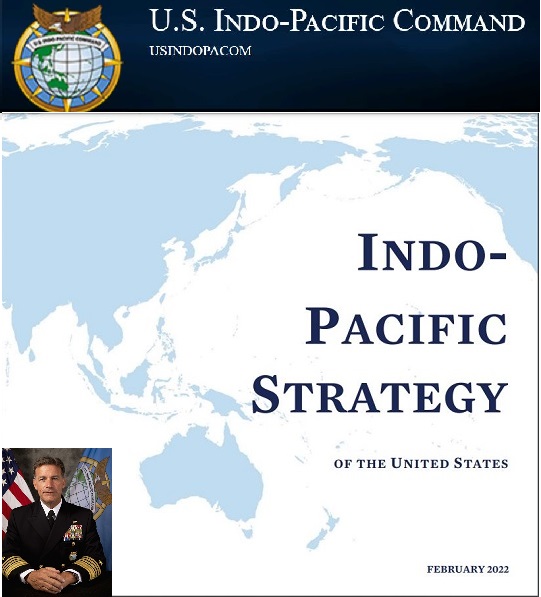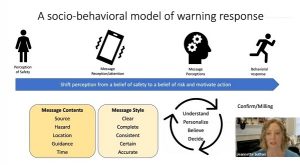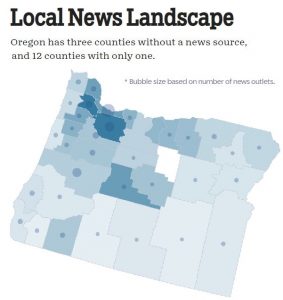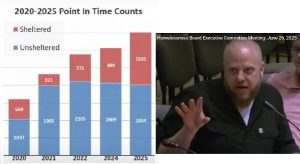China military buildup largest since WWII; US moves to support open societies
5 min read
The commander of the U.S. Indo-Pacific Command spoke June 24 about the current threat situation.
[00:00:07] Adm. John Aquilino (Commander, USINDOPACOM): The United States is pretty focused on the challenge that China provides both the United States and globally.
[00:00:14] What we are seeing from my seat is the largest military buildup in history since World War II. That buildup encompasses all domains and all capabilities, whether it’s naval ships, whether it’s fifth-generation aircraft, whether it’s missile-to-missile forces, whether it’s cyber capability or capability in space, to include strategic nuclear capability.
[00:00:36] So the concern for all Americans should be the pace, scale, and scope that China is growing and what does that mean with regard to intent for a future peaceful globe.
[00:00:49] Bradley Bowman (FDD.org): When you look at Ukraine and what’s happening there and the unprovoked invasion there, what are the core lessons you draw for the Indo-Pacific?
[00:00:55] Adm. John Aquilino: Thanks Brad. I want to first highlight the tremendous work by my partner General Wolters and all the NATO nations as well as the incredible effort by the Ukrainians. I am completely impressed by what they continue to do to defend their nation.
[00:01:13] Bradley Bowman: I was privileged to do an event a while back with the chief of the National Guard Bureau. And he talked about National Guard in Ukraine and the many, many training iterations that they conducted over the years, and how those were helpful.
[00:01:23] John Q: As with Ukraine, the Indo-Pacific Strategy calls for creating resilient allies by investing in democratic institutions, a free press, and a vibrant civil society.
[00:01:35] Adm. John Aquilino: Yeah. I’ve spoken specifically with Gen. (Daniel R.) Hokanson about the benefits that the National Guard provide. He’s really done a lot of work in helping us out. The State Partnership Program links us through people-to-people ties through all the nations in the Indo-Pacific. They bring expertise from both their civilian positions and their military roles. You know, that continues to expand our relationships with our allies and partners. And again, allies and partners in the region are a critical advantage that any competitors in the region do not have.
[00:02:06] John Q: China’s statements of support for Russia are a matter of grave concern.
[00:02:12] Adm. John Aquilino: From where I sit, the most concerning aspect of it is that the People’s Republic of China have declared a ‘no-limits policy’ in support of Russia. And what that means to both the Indo-Pacific and the globe, if those two nations were to truly demonstrate and deliver a no-limits policy, I think what that means is that we’re currently in an extremely dangerous time and place in the history of humanity, if that were to come true.
[00:02:38] John Q: They spoke about the strategic importance of Guam, which faces a 360-degree threat.
[00:02:46] Bradley Bowman: In terms of American air and missile defense on Guam, what do you see as the current primary deficiencies that need to be addressed to better protect ourselves there?
[00:02:54] Adm. John Aquilino: First, I’m extremely encouraged and thankful for the Secretary (of Defense) because as you’ve looked at the ‘23 budget, the delivery of a capability has been identified by the Department. And I thank both Deputy Secretary (Dr. Kathleen H.) Hicks and Secretary (Lloyd J.) Austin for the support.
[00:03:08] From the combatant commander position, I’ve articulated the requirements, that I believe that a near-term capability is desired. I also believe in a phased approach and continuous improvement to be able to take on all threats that might come to fruition, and certainly the threats that we see now. I’m encouraged that the Department is working towards that architecture and the delivery of a capability as soon as possible.
[00:03:31] So the key is to take that tremendous effort on the budget, and then move forward to deliver that capability, right, against all those threats. Whether they be maneuvering or whether they be ballistic; whether they be cruise missile; we have to be able to deliver that capability to protect the forces and the people against all those threats.
[00:03:49] John Q: Adm. Aquilino was asked about threats to Command and Control across such a vast area.
[00:03:54] Adm. John Aquilino: Half the globe. That said we’ve proven over many years that the United States can operate as a joint force, synchronized, integrated in all domains across vast distances. That’s the exact problem I have in the Pacific. We are continuing to work on ways to ensure that our C2 is resilient. We expect to be attacked in that domain. And we have to put in place the structure and the formations that allow us to Command and Control no matter where we are, whether it’s inside the first island chain, outside the first island chain, all the way back to any headquarters. So this view of being able to deliver a picture across a node of nodes is the approach we’re taking.
[00:04:36] We have to ensure that everyone sees the same picture. And we have to be, we have to ensure that it’s real time and the delivery of that capability is a true focus area for us, and I’m confident we can do that.
[00:04:48] John Q: As part of the latest National Defense Authorization Act, a report was provided on the Pacific Deterrence Initiative.
[00:04:57] Adm. John Aquilino: As part of the NDAA (National Defense Authorization Act), INDOPACOM (Indo-Pacific Command) was tasked to provide an assessment and an understanding of capabilities that we view as critical. I would point to that report and I would highlight the critical capabilities of being able to operate in contested space, the persistent battle space awareness—real-time—that I articulated, and then the ability to close the kill chain with the correct weapons from any location.
[00:05:20] John Q: With final thoughts, Adm. John Aquilino, Commander of the U.S. Indo-Pacific Command.
[00:05:26] Adm. John Aquilino: The key here, as we look at this pretty dangerous national security environment is, I don’t think we can operate under a business-as-usual mindset.
[00:05:34] Whether that’s the Department of Defense services, combatant commanders, industry, I think we have to understand the concern of, what does the future look like based on the security environment and the objectives of some of our competitors? And I don’t think that future is something that any of us would be happy with, right.
[00:05:54] We work and operate and fight every day for the freedoms that we have. The ability to deliver a free and open Indo-Pacific is what we spend our time on. And I can tell you, my team is the best team, the greatest set of China and threat experts in the region. And again, I thank all the service members in the Indo-Pacific for their dedication and sacrifice.
[00:06:15] John Q: A big thanks to all of the 380,000 soldiers, sailors, marines, airmen, guardians, coast guardsmen, and Department of Defense civilians who serve in the Indo-Pacific.






